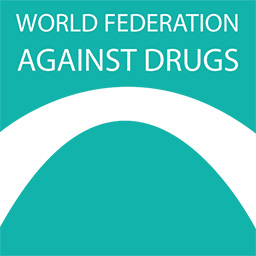During the 16 days of activism, which started on November 25th on the International Day for the Elimination of Violence Against Women and will end on December 10th on the International Day of Human Rights, the WFAD Gender Working Group is publishing statements every day highlighting issues faced by different specific populations while continuing to highlight the topic of this year: UNiTE! Activism to End Violence against Women and Girls
Gender-based violence and substance use are strongly interlinked. The negative health impact the experienced violence has on the survivor can lead to substance misuse. Additionally, substance use perpetrator often accelerates violence. Therefore, each statement, calling for preventing and eradicating gender-based violence, also calls for substance use prevention as well as sensitised and comorbid treatment.

A group facing a heightened risk of gender-based violence are refugee or internally displaced women and girls. As 80% of the refugee and internally displaced people are children and women, they are left in an increasingly vulnerable position for, for example, physical attacks and sexual assaults (Jensen 2019). Overall, one in five has faced sexual violence and the situation continues to worsen globally (UN 2021).
Within a conflict setting, women and girls are often the first to lose their basic rights to, for example, education, political participation, livelihoods, etc., which exacerbates gender inequalities. Simultaneously, when on the move, vulnerability to all forms of sexual and physical violence increases and they risk being brutalised by human traffickers or even border security forces.
Many girls and women have been subjected to and traumatised by physical and sexual violence, such as rape, during the conflict setting. Whereas the refugee camp should be a place of safety, this is often only elusive and the threat of gender-based violence still strongly exists. Especially in closed camps as traditional behavioural norms and restraints break down. “In such circumstances refugee women and girls may be raped by other refugees, acting either individually or in gangs” (Obradovic 2015). Overall, the research highlighted that violence, whether it is sexual gender-based violence or intimate partner violence, is often a way of acting out and eradicating the feeling of helplessness, caused by psychological distress. Besides this, other factors also enable assault, such as the social surroundings, the presence or lack of aid organisations and security workers, or the camp design (Jensen 2019). Additionally, power abuse, leading to assault, by humanitarian or camp staff also is apparent (Obradovic 2015).
When violence has been experienced, the barrier to reporting the violence is immense and often the crime will be hidden by the survivor. The first barrier would be stigma and shame. Shame can be linked to the cultural perception of the blame on the victim, the taboo on the topic, the family’s honour, or if the perpetrator is known. On top of that, psychological, emotional, physical, and intellectual pain often holds women back from reporting. Third, the fear exists that reporting the violence would slow down their journey to safety outside the camp. Fourth, survivors often live with their perpetrators, which makes reporting riskier. Finally, the question of responsibility within the bureaucratic system leads to an inability to report (Jensen 2019).
The threat of gender-based violence for refugee or internally displaced women and girls is a crisis and measures must be taken to stop the increasing trend of violence perpetrated against them. Firstly, more improved data collection and analysis, with full support from all stakeholders involved, should be developed to accurately map the existing risks. Secondly, more training and awareness-raising need to be conducted among the staff, including topics such as gender-based violence, sexual and physical assault, gender inequality, and discrimination. Thirdly, more resources need to be allocated to meet the long-term needs of survivors. Finally, cooperation among relevant actors needs to be increased (Obradovic 2015). Additionally, services, including trained staff, should be in place to facilitate referrals for health care, social services, and protection as well as vocational training, income generation projects, and women’s support groups. In case, the survivor would like to report, a safe environment with trained police staff should be available (Ward and Vann 2022). Generally, all efforts developed to decrease the [risk of] violence should include the voice of refugee and internally displaced women. local and refugee-led projects can be powerful and reflect the existing needs of women.
References
Jensen, Mie A. 2019. Gender-Based Violence in Refugee Camps: Understanding and Addressing the Role of Gender in the Experiences of Refugees. Vol. 11, NO 02.
Obradovic, Marija. 2015. Protecting Female Refugees against Sexual and Gender-based Violence in Camps. https://unu.edu/publications/articles/protecting-female-refugees-against-sexual-and-gender-based-violence-in-camps.html
United Nations (UN). 2021. Violence against refugee women surged in 2020, but grassroots solutions can help tackle scourge. https://news.un.org/en/story/2021/11/1106592
Ward, Jeanne and Vann, Beth. 2002. Gender-based violence in refugee settings.


Leave a Reply
You must be logged in to post a comment.